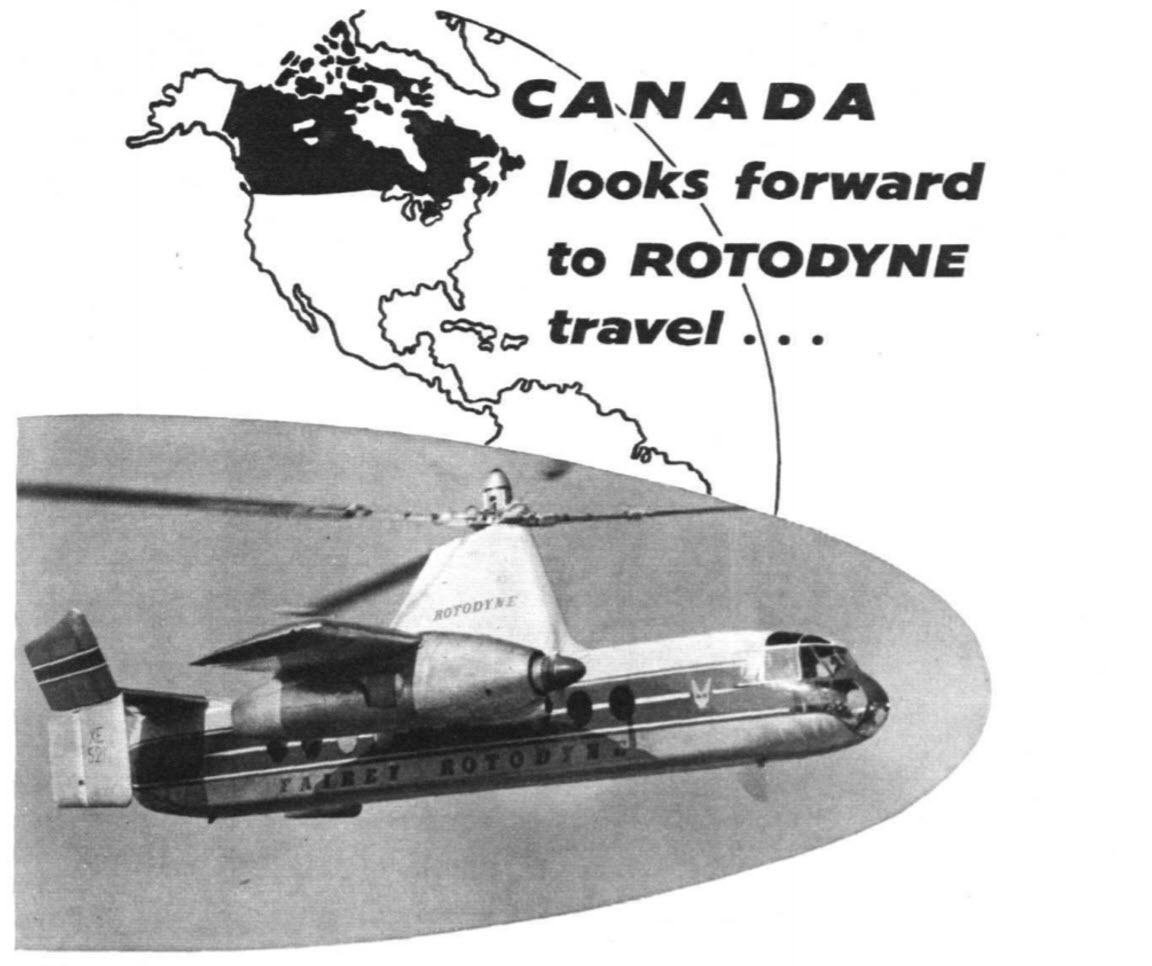Written for APEX Experience Magazine, Issue 7.3, June-July 2017
The history of aviation is littered with aircraft concepts and prototypes that promised to bring point-to-point passenger services to the traveling public. The idea of replacing massive and remote airports with a rooftop or downtown landing pad was, to say the least, inviting.
The 1950s were a time of enthusiastic aerospace development and innovation, and one odd-looking aircraft of the era was the Fairey Aviation Company’s Rotodyne. It was designed to meet a short-haul vertical-lift requirement of British European Airways (BEA), an ancestor of today’s British Airways.
The Rotodyne was a combination airplane, helicopter and autogyro, and the prototype first flew in 1957. It had wings, turboprop engines, and a tip-jet powered main rotor, all surrounding a cabin with seating for 40 passengers.
To become airborne, the Rotodyne’s main rotor was spun up using its intolerably-loud, fuel-driven tip-jets. After climbing out like a helicopter, the aircraft transitioned to forward flight, as power was increased to its wing-mounted turboprops. At that point, the tip-jets were shut down, leaving the main rotor to spin freely, providing lift in autogyro mode. To land, the process was reversed, with the tip-jets restarted to ensure that the rotor was spinning until touchdown.
While there was interest from airlines and military forces, the Rotodyne was cancelled in 1962 by the British government, citing limited sales and high development costs. By then, the prototype Rotodyne had flown 455 times, and safely carried more than 800 passengers.
Canada’s Okanagan Helicopters placed one of the few orders for the Rotodyne, intending to fly it between Vancouver, British Columbia, and the province’s capital, Victoria, located 60 miles southwest, on Vancouver Island.
With the cancellation of the Rotodyne, it wasn’t until 1986 that scheduled helicopter service started between the two cities. That year, Helijet International began flights using helicopters, and it continues to be one of only a handful of helicopter airlines providing scheduled flights, worldwide. Helijet was recently recognized by Sikorsky for 30 years of safe operations of S-76 aircraft.
What if the Rotodyne had been given the chance to evolve from its experimental prototype – could it have been a success?
“Although I truly can’t offer a qualified answer without knowing the public’s perception, or the economics of the Rotodyne,” says Danny Sitnam, Helijet’s president and CEO, “my intuition is that it was ahead of its time, and that the benefits of its technology were not foreseen.”
